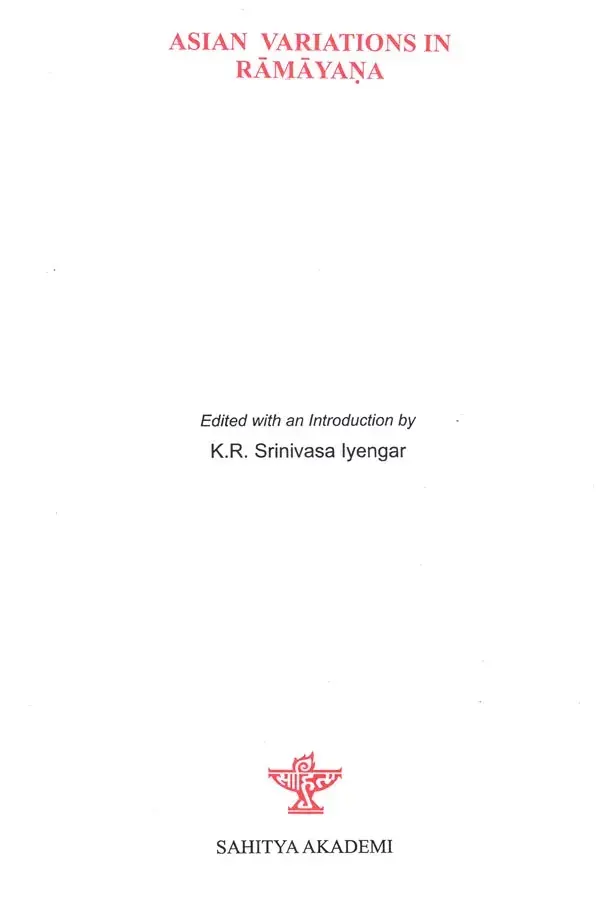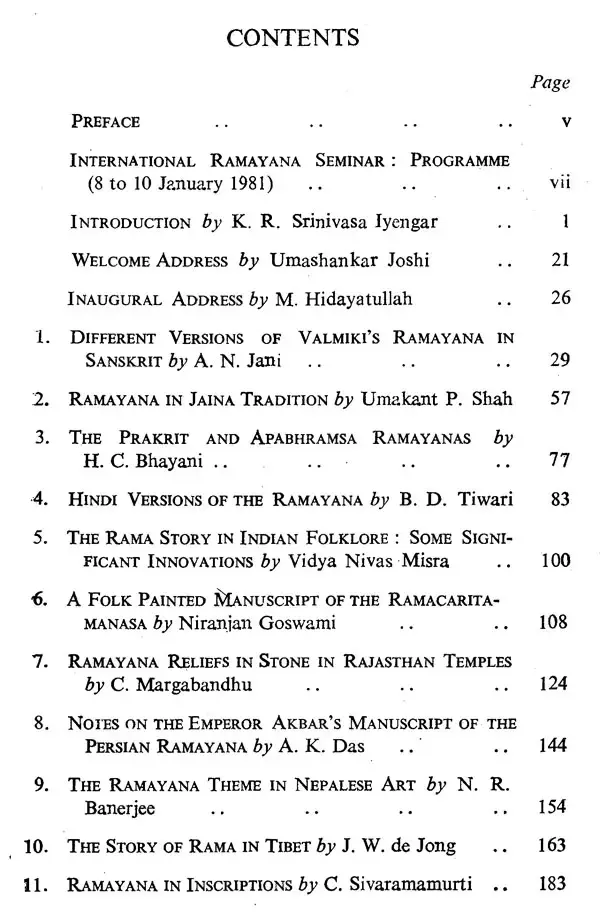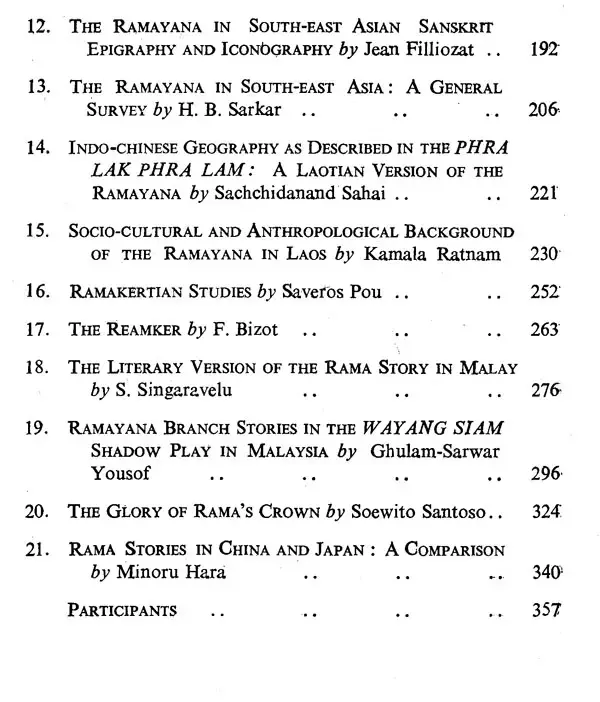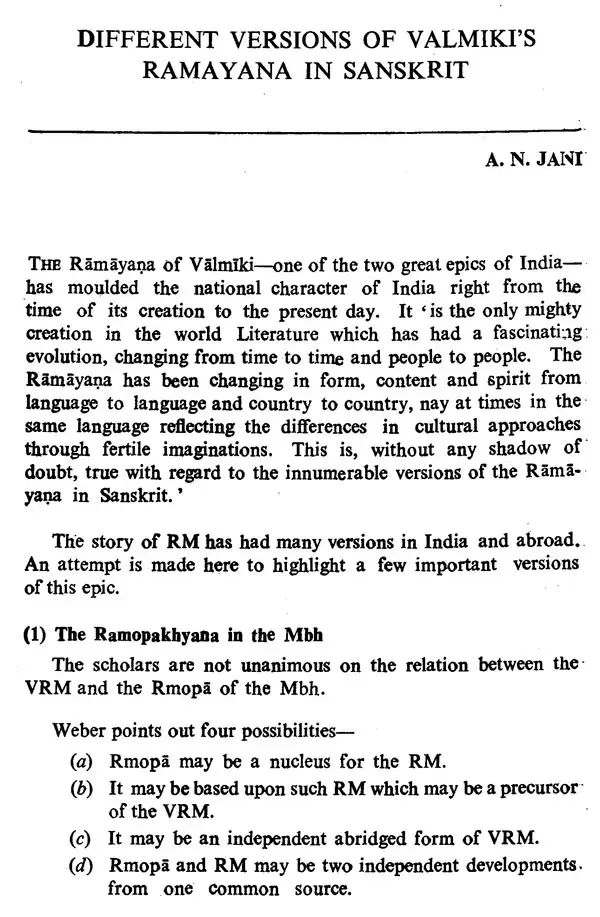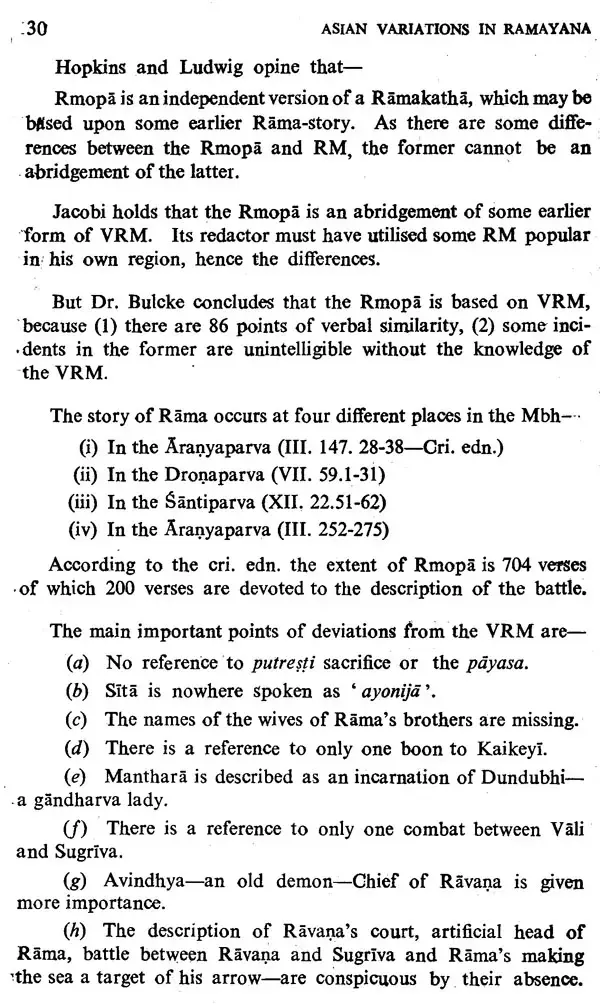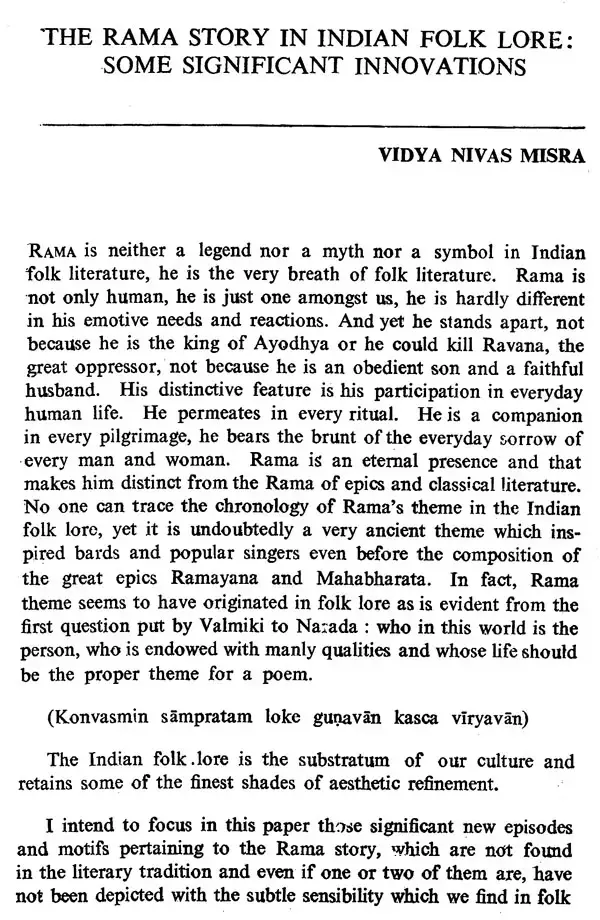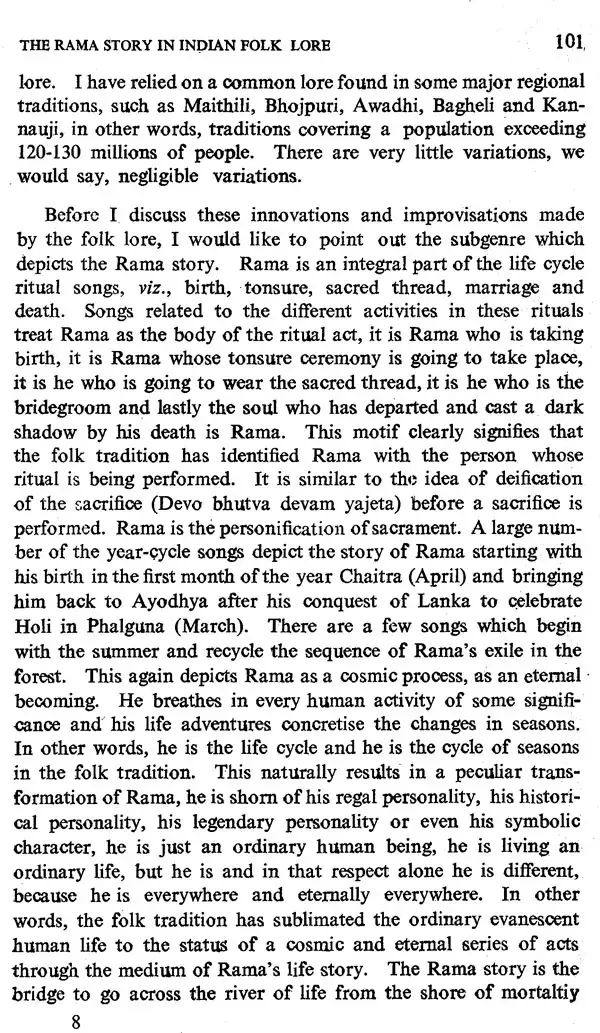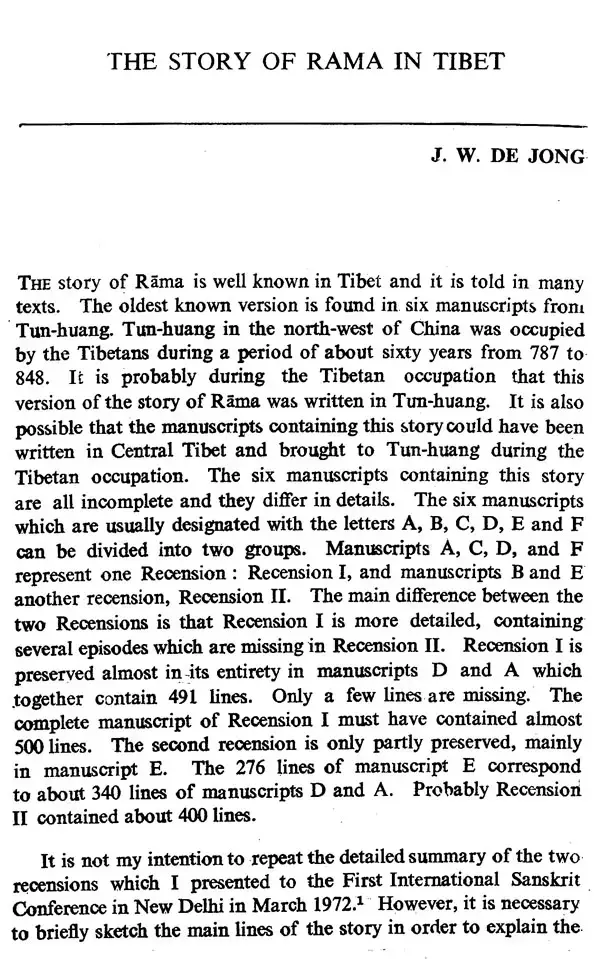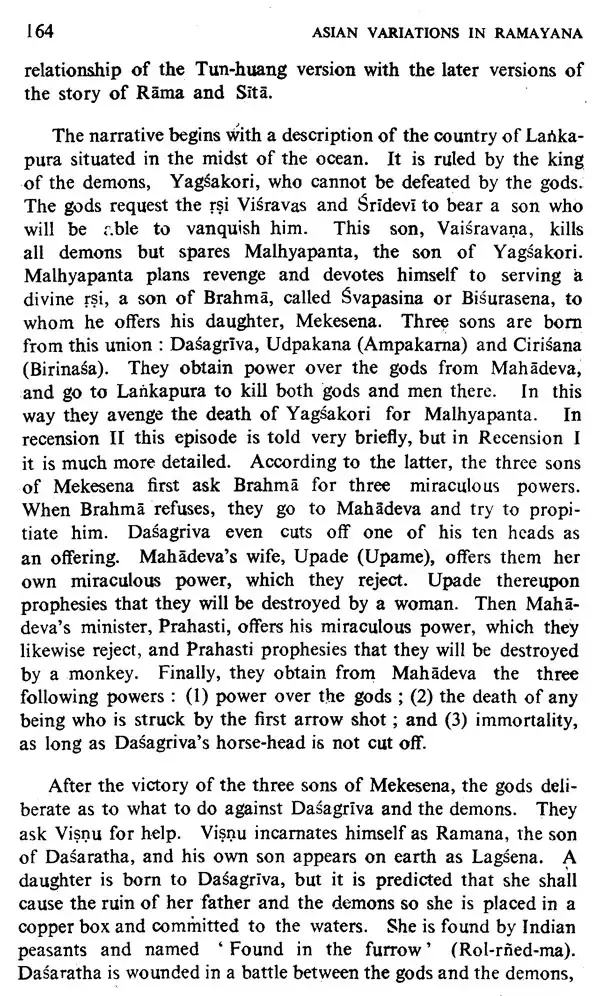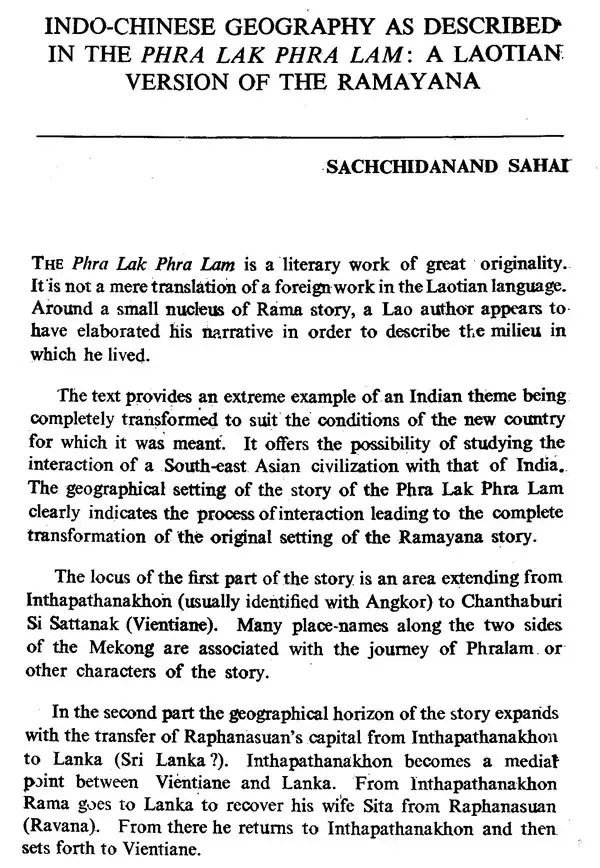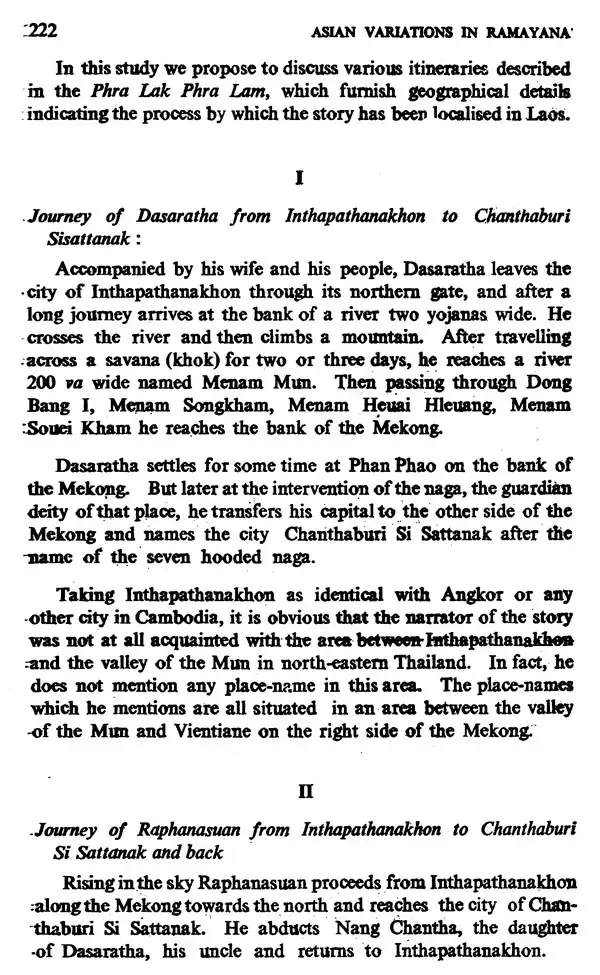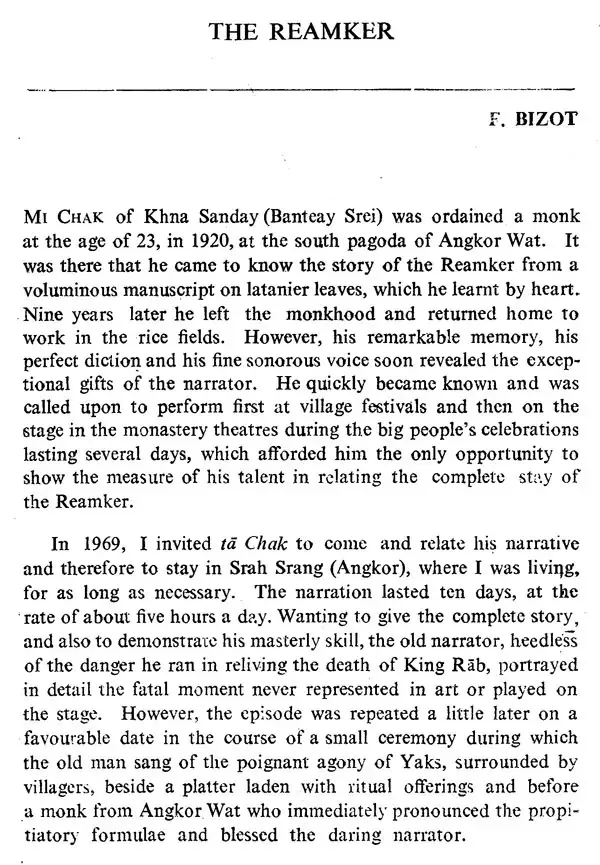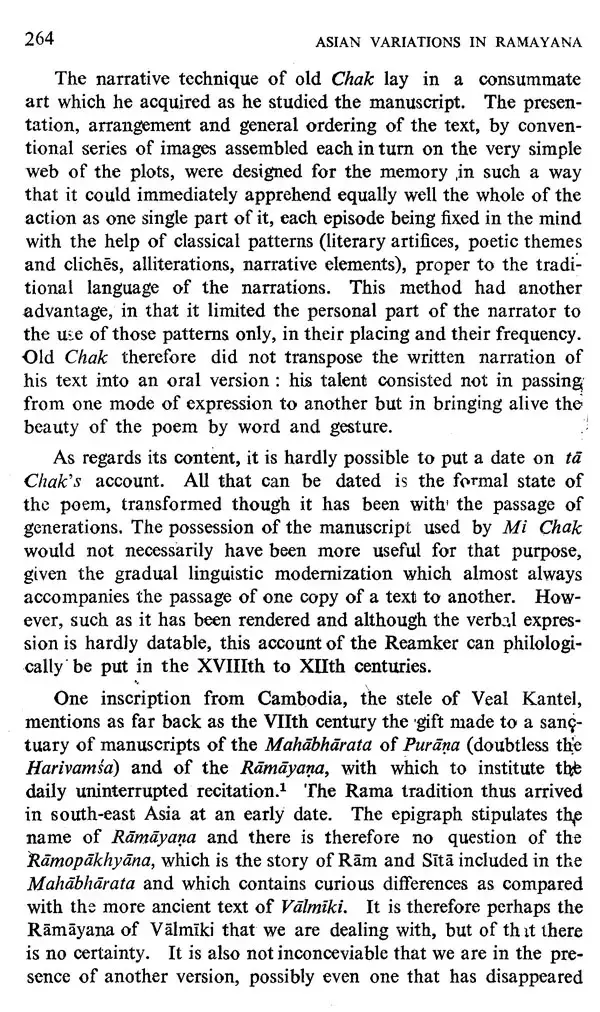
Asian Variations in Ramayana (Papers Presented at the International Seminar on 'Variations in Ramayana in Asia : Their Cultural, Social and Anthropological Significance' : New Delhi, January 1981)
Book Specification
| Item Code: | UAT710 |
| Author: | K. R. Srinivasa Iyengar |
| Publisher: | SAHITYA AKADEMI, DELHI |
| Language: | English |
| Edition: | 2018 |
| ISBN: | 9788126018093 |
| Pages: | 358 |
| Cover: | PAPERBACK |
| Other Details | 8.50 X 5.50 inch |
| Weight | 470 gm |
Book Description
Asian Variations in Ramayana:
This volume is a compilation of Sahitya Akademi's Second International Ramayana Seminar held in New Delhi from 8 to 10 January 1981, where twenty-one scholars presented papers on twenty-one more or less diversified themes. The book showcases the different aspects of Ramayana covering the Southeast Asia as a whole, and more specifically India, Tibet, Nepal, Laos, Cambodia, Malaysia, Indonesia, China and Japan. Serious literature, folklore, epigraphy, iconography, and performing arts, all come within the purview of the learned papers, and the opulent and variegated Ramayaṇa heritage is seen in relation to the different lands and their peoples, and vistas of comparative appreciation are thrown open, and the obscure processes of cultural cross fertilization are exemplified by the ramifications of the Rama story in the many Southeast-Asian countries.
K.R Srinivasa Iyengar
(1908-1999) A well known scholar, critic and foremost among the pioneers of Indian-English studies, he was the Vice-President and later Acting President of Sahitya Akademi, Visiting Professor at the University of Leeds, and Adhishthata of Sri Aurobindo Ashram at Delhi and so on. Iyengar hed published two very important books, Sri Aurobindo: A Biography and a History and On the Mother. Sitayana, which is his magnum opus, is considered as one of the most important literary productions of twentieth century.
I felt honoured, if also embarrassed, when I was asked to edit the papers presented at Sahitya Akademi’s Second International Ramayana Seminar in New Delhi in January 1981. I had participated in the earlier Ramayana Seminar of 1975, but I didn’t attend the more recent one; and this was doubtless a handicap. And, besides, stenographers’ reports of the actual discussions were not available. Accordingly, what is here brought. Together is by no means a complete record of the proceedings of the Seminar.
The savants who took part in the Seminar were drawn from different parts of India and Southeast Asia, and the spellings of proper names in some of the papers conform to local usage. Such surface variations are a bye-law of the ground of under- lying unity, and no attempt therefore has been made here to impose a cast-iron uniformity. Further, owing to the long distances involved, it has not been possible to enter into any detailed correspondence with the concerned scholars.
In my Introduction, I have tried to present an integrated summary of both the Sahitya Akademi Seminars in the broader context of Ramayana studies.
Two of the eminent participants-Prof. Jean Filliozat and Dr. C. Sivaramamurrti passed away while the volume was in the press. This is a great loss indeed to the world of Ramayana studies and Indological scholarship.
I am happy to record my gratitude to Dr. S. S. Janaki, Director, Kuppuswami Sastri Research Institute, Madras, for ready help and advice, and especially for shouldering the burden of proof- reading and seeing the book through the press. I may add that she had also helped to see through the press the earlier volume, The Ramayana Tradition in Asia, edited by the late Dr. V. Raghavan.
Nor should I fail to add a word of thanks to the Diocesan Press, Madras, for their expertise in printing and producing this volume.
SEVBN years ago, from 8 to 10 December 1975, Sahitya Akademi (in association with the Union Ministry of Education) held an International seminar on ‘ The Ramayana Tradition in Asia', in celebration of the 400th year of the composition of Tu1sidasa’s Ramacharitamanasa. An earlier International Ramayana Seminar had been held in Indonesia in 1971, followed next year by the First International Sanskrit The characters of the Lord Rama, his lady Sita, and their loyal followers still come to life nightly on the shadow screens of the north-west Malaysia where the performance of at good dalang can still draw a larger audience than a local open- air cinema showing the latest in Hollywood coco-cola culture.’ And thus U. Thein Han, Chairman of the Burma Historical Com- mission : ‘It (the Ramayana) is not only a literary treasure but also a source of ennobling influence on the relationships of men as parents and children, husbands and wives, brothers and sisters, relations and friends, teachers and pupils, and rulers and the ruled. If Malaysia with its dominant Muslim and Burma with its Buddhist population can still respond thus to the influence of the Ramayana, this ambience is clearly something that transcends mere region, race, religion, language or the vicissitudes of time and local history.- The 1975 Seminar on ‘The Ramayana Tradition in Asia had ‘eleven sessions (including, the Inaugural) and nearly 50 delegates participated in its deliberations. The welcome speech by the President, Dr. Suniti Kumar Chatterji, the inaugural address by Prof. Nurul Hasan, and Dr. V. Raghavan’s words keyed to the occasion defined the scope and set the tone of the Seminar. Whether or not the Ramayana of Valmiki constitutes in some measure a factual record of what had once happened, this much is a continuing fact of our national experience: the exile of Rama from Ayodhya on the eve of his expected coronation, the poignant meeting of Rama and, Bharata at Chitrakuta, the abduction of Sita, the Vali-Sugriva fratricidal conflict, Hanuman What is, perhaps, even more astonishing than the universal vogue and nectarean role of the Ramayana in India is the general diffusion of the story all over the world. Even as, in India, the Hindu, Buddhist, Jaina and other Ramayana versions vary from one another, just as the numberless folk renderings and evocations in the plastic and the performing arts reveal a tantalising versatility in the handling of the Rama-Sita-Ravana theme, the legend has likewise undergone countless variations in the process of diffusion or transplantation abroad to the several far-Hung countries of Asia. Like the Purusha’s 1000 heads, or 1000 feet, equally defying enumeration or comprehension are the thematic changes, adaptations, elaborations, deviations, transmigrations and even Bottom-like ‘translations’ of the original Ramayana legend. But there is also, defying all the alterations and the aberrations, the electrifying unifying essence, the home-of-all powerhouse-of all in the Adi- Kavi’s poetic testament. What the distinguished assembly of scholars, savants and Rasikas gathered in New Delhi in the 400th year of Tulsidasa’s Ramacharitamanasa tried to do was to study this uniquely fascinating phenomenon of the Ramayana story`s transmission, proliferation and transmutation, and its lodgement in hundreds of millions of human hearts and sensibilities. The papers presented at the Seminar comprised evaluations of the Ramayana recensions, versions or traditions in Sanskrit, in the Jataka tales, in the Jaina works, in Tamil, Kannada, Telugu, Malayalam in Hindi, Gujarati, Kashmiri, Punjabi, in Assamese, Manipuri, Bengali, Oriya, in Nepal, Mongolia, Burma, Malaysia, Indonesia, Thailand, Laos, the Philippines, Sri Lanka, as also in inscriptions, sculptures, paintings and the performing arts. Speaking in general terms, Suniti Kumar Chatterji declared that the Ramayana, in some local version or another, had become established in the countries of Southeast Asia ‘almost as a national epic as much as in India’. Lokesh Chandra added: ‘The Ramayana has become the lyric of the men of Asia from Siberia to Indonesia, filling their unbounded Self with ecstasy, with an ocean of bliss.’“ Harry H. Buck confessed that, for 15 years, he had been ‘fascinated by Rama}, V und declared further: ‘Ramayana to me is human experience’. Of the Ramayana’s wholly salutary impact on the people of India, Fr. C. Bulcke said: ‘The popularity of the Valmiki Ramayana and the voluminous Rama-Literature of many centuries is a monument to the idealism of India, its high esteem of moral values and its belief in the ultimate of good over evil. In the same way, the enthusiastic response of the millions of northern India to the message of Ramacharitamanasa testifies to the deep-seated religious belief and spontaneous piety of the soul of India And thus Kapila Vatsyayan, on the beneficial vogue of the Ramayana beyond India’s borders ‘ The story of Rama seems to have bewitched and hypnotised generations of Asians belonging to countries with different religious, literary and cultural traditions... Its popularity has not been confined to the traditional framework, but has impregnated a variety of modern media, such as comics, film strips, feature films, documentaries and the rest." On the last day of the Seminar, l2 December 1975, the Organizing Committee resolved that the Proceedings should be published in due course, and further that a central repository of Ramayana materials be built up, classified and catalogued under Sahitya Akademi’s auspices ‘so that the same could be supplied through microfilms or other means to Ramayana scholars all over the world’; and also that a Project be undertaken with international cooperation in respect of a concordance and variorum of Ramayana characters, episodes and motifs’. The papers presented at the 1975 Seminar-forty-four in all- have since been published, as edited by the late Dr. V. Raghavan, with the title The Ramayana Tradition in Asia (1980). In the meantime, Sahitya Akademi undertook on behalf of the Union Academique International the formidable but worthwhile project of compiling a critical inventory of Ramayana studies-‘Invent- taire raisonne des Etudes du Ramayana’-in the world. In furtherance of this project, the Indian Council for Cultural Relations sponsored a tour by Dr. R. S. Kelkar, Secretary of Sahitya Akademi, from 1 to 14 March 1980, enabling him to visit universities and cultural organizations, and establish contacts with Ramayana scholars in Thailand, Malaysia, Singapore and Indonesia. During his tour, Dr. Kelkar visited Hindu and Buddhist temples, studied modes of worship, learnt of local history and of the interaction of Indian and Thai or Malaysian or Indonesian culture, saw paintings and sculptures in museums and private galleries, held meaningful discussions with Ramayana scholars, gathered valuable information relating to possible preliminary regional inventories of Ramayana material, witnessed performances with a mythological slant, and be it at Bangkok, Djakarta, Bali, Singapore, or Kuala Lumpur made the most of his stay to further the objective of the tour It was also a preparation for the Second International Ramayana Seminar. **Contents and Sample Pages** 